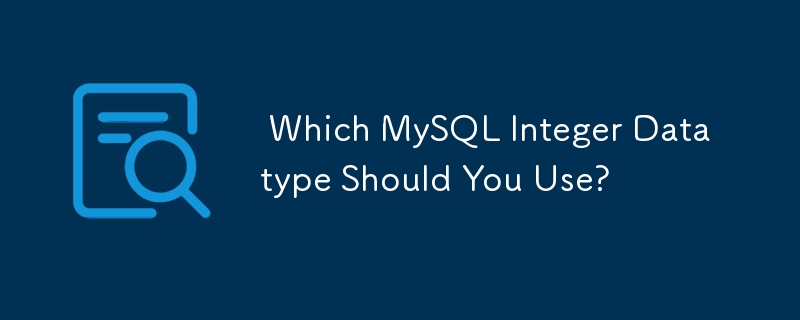
Understanding the Differences Between MySQL Integer Datatypes
MySQL offers a range of integer datatypes that vary in their storage requirements and value ranges. These types include tinyint, smallint, mediumint, bigint, and int. Understanding the distinctions between them is crucial for selecting the appropriate datatype for your specific data needs.
Data Size and Range Considerations
The key difference among these datatypes lies in their size and the range of values they can hold. Here's a breakdown:
-
tinyint: A 1-byte integer with a signed range of -128 to 127 or an unsigned range of 0 to 255.
-
smallint: A 2-byte integer with a signed range of -32,768 to 32,767 or an unsigned range of 0 to 65,535.
-
mediumint: Exclusive to MySQL, it's a 3-byte integer with a signed range of -8,388,608 to 8,388,607 or an unsigned range of 0 to 16,777,215.
-
int/integer: A 4-byte integer with a signed range of -2,147,483,648 to 2,147,483,647 or an unsigned range of 0 to 4,294,967,295.
-
bigint: An 8-byte integer with a signed range of -9,223,372,036,854,775,808 to 9,223,372,036,854,775,807 or an unsigned range of 0 to 18,446,744,073,709,551,615.
Appropriate Use Cases
The choice of datatype depends on the size and range of the values you need to store. For instance:
-
tinyint: Suitable for small flag values, such as binary indicators (0 or 1).
-
smallint: Suitable for storing values that fall within a limited range, such as department IDs.
-
mediumint: Primarily used in MySQL, it's ideal for storing larger values than smallint but smaller than int.
-
int/integer: A versatile datatype applicable for majority of integer values.
-
bigint: Essential for storing large integers, such as IDs or monetary values.
By understanding the differences between tinyint, smallint, mediumint, bigint, and int in MySQL, you can optimize the use of storage space and ensure the accuracy and integrity of your data.
The above is the detailed content of Which MySQL Integer Datatype Should You Use?. For more information, please follow other related articles on the PHP Chinese website!






